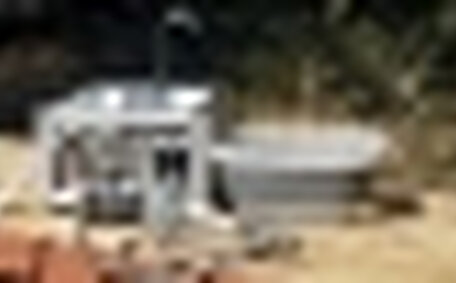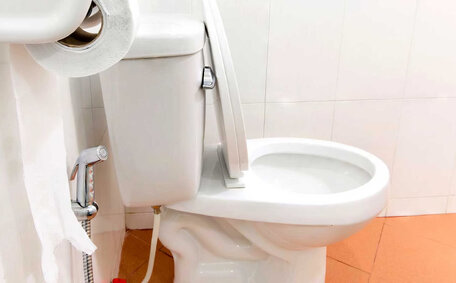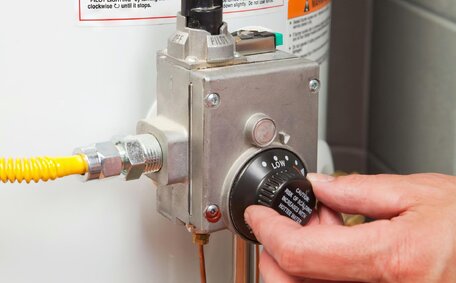Get Your Hot Water System Winter-Ready
As the cold winter months approach in Sydney, it’s crucial to prepare your hot water system to maintain efficiency and prolong its lifespan. Colder groundwater temperatures may require your hot water system to expend more energy heating water, heightening the risk of pipe bursts. Properly winterizing your system helps prevent pressure buildup and pipe bursts that can cause extensive damage to your home.
The licenced professionals at Colyton Plumbing recommend several key maintenance steps for your storage hot water system before winter hits. Key maintenance tasks include flushing the heater, inspecting valves and anodes, calibrating the thermostat, insulating pipes, and arranging tune-ups, all of which help conserve energy and money. Our plumbing services also include assessing your heater needs and advising on upgrades to modern energy-efficient systems.
Follow our maintenance guide to reduce energy bills and avoid costly repairs this winter. Reach out to Colyton Plumbing to learn more about tailoring a maintenance plan to get your water heater ready for the demands of winter.
Check and Adjust the Water Heater Temperature
It’s crucial to check and adjust your hot water system’s temperature before winter arrives. The optimal temperature, which means ensuring the water your system heats effectively, is between 50°C and 60°C. Make sure your water heater is set to optimal temperatures, as excessively high temperatures waste energy, while temperatures below 50°C increase Legionella bacteria risk.
To begin, locate the thermostat dial on your water heater.
On a gas storage tank unit, you’ll generally find it near the bottom.
Prior to thermostat adjustments, turn off the power supply to ensure safety and system efficiency. Then, cautiously adjust the thermostat to a setting between 50 and 60°C. For your solar-electric systems, set it higher (60-70°C) to compensate for heat loss, rather than when delivering water.
Turn the power back on and test water from a tap, using a digital thermometer, after 5 minutes. After testing, adjust once more to reach the desired water temperature. Check your system seasonally as incoming groundwater temperatures fluctuate.
If your heater is over 8 years old, Consider making the smart move to replace your old heater with a new energy-efficient tankless water heater. High-performance heat pumps and electric hot water systems occurring in winter can dramatically reduce energy costs.
Flush the Water Heater Tank
Annual flushing removes mineral deposits, preserving your hot water system’s efficiency and longevity. Over time, mineral deposits and debris combined with plumbing electrical elements settle at the bottom of the tank and can slow the warm up process. This limescale can build up and reduce heating capacity.
Start by turning off power to the water heater and shutting off the cold water intake valve. Next, close the water supply to your system and fully open the drain valve using a flathead screwdriver or the appropriate tool.
Situate a bucket beneath the tank and release the drain valve to start the flushing process. Let water from your water tank drain until it runs clear.
Run clean water through for 3-5 minutes to wash out remaining sediment buildup. Drain and refill the tank, then restore power.
Annual flushing of your water heater wards off early deterioration and malfunction. Doing this maintenance along with inspecting the anode rod maximises operational efficiency. If you’re not sure how to access interior components, your plumber can assist.
Inspect and Replace the Sacrificial Anode Rod
Sacrificial anode rods play a vital role in preventing corrosion inside your hot water tank. They actively dissolve, attracting corrosive elements instead of allowing the steel tank to corrode. Inspecting and replacing your anode rod maintains system integrity.
Begin by locating the anode rod, often a magnesium or aluminium rod, protruding from the tank’s top. Check it annually and replace it if it’s eroded more than 60%. Tanks older than 5 years often need rod replacement.
Use pipe wrench pliers to loosen and extract the rod. Clean the threads and insert a new anode rod, tightening it securely.
After shutting off any power and water supply, partially drain the tank.
The replacement of deteriorated anode rods boosts the longevity of your hot water system. Get your licenced plumber to tackle this maintenance if accessing the rod proves challenging. They can also help select the optimal new anode metal type to protect your tank.
Insulate the Water Heater Tank and Pipes
Insulation of your hot water unit and pipes reduces heat loss in winter. This allows your system to use your energy more judiciously, hence saving on costs. We recommend installing a water heater insulation blanket designed specifically for tanks.
Abide by the manufacturer’s guidelines for clearance from any flue ducting. Then wrap the blanket around the tank, ensuring there no gaps and securing it according to the product instructions. Insulation maintains warmth and ensures easy access for anode rod checks.
For exposed pipes, use foam tubing or fibreglass strips to wrap supply lines. Make sure to insulate at least 3 feet from where pipes exit the tank. Properly insulating lines with a flood stop feature prevents freezing in the cold weather.
Adopting these proactive winter care steps helps retain heat energy and enhance your system’s efficiency. Pair insulation with preventative maintenance to maximise performance. If your water heater model is over 8 years old, consider upgrading to a new energy-efficient model to significantly reduce winter bills.
Test the Pressure Relief Valve
Testing your hot water system’s pressure relief valve regularly is crucial for thorough heater maintenance. Also known as a TPR (temperature pressure relief) valve, this safety mechanism releases water heater your tank pressure buildup from thermal expansion or overheating.
Excessive heat and pressure can harm pipes, joints, and the water heater itself. Failing to test this valve can also allow dangerous pressure accumulation, risking explosion.
Manually activate the TPR valve every 6 months by briefly lifting its lever to ensure your system’s safety. This confirms the valve can still open for pressure release, a critical aspect of your system’s protection routine. Replace the valve every 5 years or immediately if it’s faulty, leaking, or failing to open.
Replacing ageing relief valves prevents catastrophic system failures. Older valves become mineralised and stuck shut, rendering them ineffective for protecting your hot water system. Our licenced technicians ensure your water heater should have its TPR valve tested on your hot water unit and, if necessary, fit a reliable new one.
Consider Efficiency Upgrades
As water heaters age, Upgrading to efficient hot water heaters constitutes a wise long-term investment that lowers running costs. Modern heat pump and tankless water heaters can ensure your water heater can save upwards of 50% or more energy than older models.
Look for systems with the Energy Star label for maximum savings. Heat pump water heaters capture ambient heat to minimise electrical heating element use. Tankless on-demand models only heat water as needed, ensuring your heater can avoid maintaining a full tank temperature.
Solar hot water heating also qualifies as an efficiency upgrade, much like gas hot water systems. Solar panels harness the sun’s heat, so your unit can warm water instead of using electricity or gas. Combining solar hot with a heat pump water heater maximises efficiency.
Upfront costs tend to run higher for these innovative systems but the long-term energy savings make them worthwhile. Contact our team to learn more about the most economical upgrade option for your household and take advantage of any eligible rebates.
Maintain Optimal Thermostat Settings
Adjusting your hot water system’s thermostat times is a great way to maximise energy savings this winter while still getting hot water when you need it. Here are some tips:
- Set the thermostat to heat water 1-2 hours before your typical morning shower routine to ensure your shower is comfortably warm. This ensures hot water your heater is ready with when you need it.
- Lower the temperature setting in the afternoon/evenings when demand lessens. Try 50-55°C. You can always boost it temporarily if required.
- Use timers to restrict heating elements during sleeping hours. Most households don’t need continual hot water overnight.
Experiment with times to align with your schedule. Quick morning heat-ups paired with a temperature drop in off-peak periods can make sure your electricity bills are reduced this winter without sacrificing comfort.
For tailored adjustments that offer winter water heating savings, reach out to Colyton Plumbing. We can help adjust your thermostat or upgrade old inefficient models if needed.
Signs You Need Professional Help
Several warning signs indicate when it’s time to call a professional for hot water system servicing. Persistent problems you can’t resolve on your own include:
- Fluctuating water temperatures or insufficient hot water
- Continuous water leaks, dripping taps, or signs of tank corrosion
- Faulty thermostats failing to properly regulate temperature
- Loud or strange noises from the tank, pipes, or heating elements
- Faulty valves and pressure gauges giving abnormal pressure readings
- Faulty or failed anode rods failing to protect the inner tank
Scheduling annual maintenance checks from our qualified technicians at Colyton Plumbing can make a significant difference in catching the most common issues before they become serious. We specialise in troubleshooting, repairing faults, and advising on the cost-effectiveness of upgrades or replacements.
Leverage our extensive experience in hot water systems for reliable service. Contact Colyton Plumbing for reliable winter preparations or emergency repairs when troubling symptoms arise.
Contact Colyton Plumbing for Assistance
Winterizing your hot water system properly is crucial, but sometimes unpredictable issues still arise. If you encounter problems like temperature fluctuations, leaks, strange noises, or faulty components, these could be part of your system needing expert attention.
The licenced professionals at Colyton Plumbing have the experience to diagnose and resolve any hot water system problems. We can:
- Identify issues and decide on the necessary repairs or replacements
- Adjust thermostats and timers for optimal efficiency
- Upgrade outdated heaters to energy-efficient models
- Substitute malfunctioning anode rods, pressure valves, heating elements, and other parts
- Conduct preventative maintenance to increase system longevity
Rely on our years of expertise for dependable servicing and winter preparation of your hot water system. Contact Colyton Plumbing today via 1300 349 338 or [email protected] to schedule assistance tailored to your needs.






